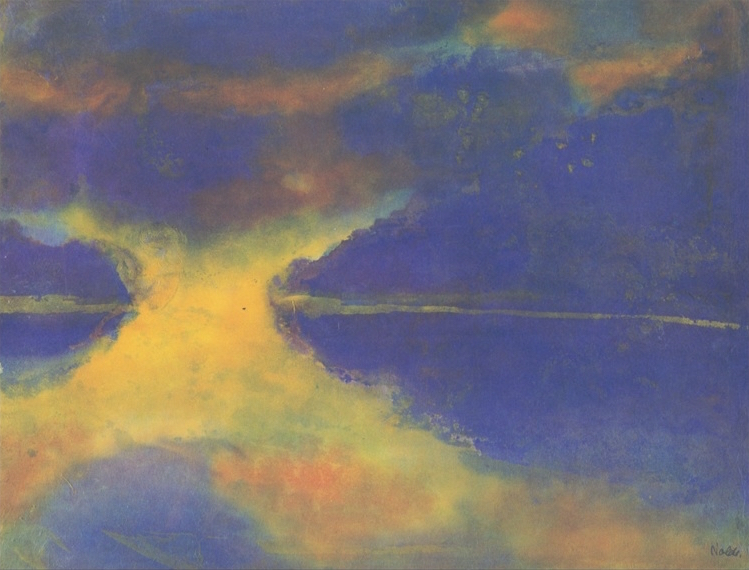Ying Zhou teaches a Geology 101 class to students at Virginia Tech,Watch Fast And Furious Online but after peering deeply into the subterranean world beneath the Yellowstone volcano, Zhou says she needs to modify her lesson plans -- for Yellowstone, anyhow.
Yellowstone is one of the most heavily-researched volcanoes in the world, and it's believed to be responsible for few mega-eruptions in the last two million years. Volcanologists understand its behavior quite well, and there's agreement that any sort of eruption would be likely be proceeded by months or even years of warning.
But scientists still aren't sure exactly how the volcano came to be, though many suspect its hundreds of geysers and steaming springs are fueled by a great plume of hot rock emanating from the deep Earth, which rises up to a surface "hotspot."
Yet Zhou, a theoretical seismologist, has found otherwise.
SEE ALSO: Cannibalism, infanticide: The dark side of Alaska’s bear camIn a study publishedlast week in the journal Nature Geoscience, Zhou describes how she used seismic measurements from earthquakes around North American and beyond to build a visual representation of an inaccessible, mysterious place: the world deep beneath Yellowstone. And what Zhou found, was unexpected.
 Original image has been replaced. Credit: Mashable
Original image has been replaced. Credit: Mashable "I was puzzled," said Zhou in an interview.
She thought she might see the great plume of intensely hot rock, similar to the plume feeding Hawaii's Kilauea volcano.
"But we saw something different," said Zhou.
She found a massive slab of ancient Earth crust, some 250 to 270 miles beneath the ground.
It had broken into giant pieces, but one slab dropped deep beneath Yellowstone, digging into the deep Earth and apparently triggering a welling up of the Earth's mantle -- the hot rock beneath the crust.
There was no clear sign of a single, large plume feeding Yellowstone, and it's famous national park.
"The argument has been going on for a long time," John Wolff, a volcanologist at Washington State University who had no role in the research, said in an interview. "While its true that the plume hypothesis tends to dominate, there’s always been this alternative view."
"I'm really on the fence," Wolff added.
But Zhou isn't.
"If there is a plume, it would explain things nicely," said Zhou. "But here we don’t see the plume — so in that sense, the plume theory is open to challenge."
 Original image has been replaced. Credit: Mashable
Original image has been replaced. Credit: Mashable In fact, no one has ever actually seen the plume, nor the chunk of Earth's crust Zhou thinks is there.
Earth's deep underworlds are mostly distant and inaccessible. So what any geologist knows is largely based upon studying rocks on the surface and detecting seismic activity beneath the ground to build a picture of what might be transpiring below.
That's why the science isn't yet settled.
"Both theories involve explaining a feature that formed over the past 15 to 20 million years ago when there was nobody around to take notes or images of what was going on," Stanley Mertzman, a geoscientist at Franklin and Marshall College who had no involvement in the research, said over email.
"So scientists are doing their level best to explain this feature based on rather indirect evidence."
Mertzman speculated that this could potentially be "the opening salvo in a debate" between Zhou's recent findings and researchers persuaded by the hotspot theory, which has decades of evidence behind it.
"This paper is not going to end the argument," said Wolff.
 Original image has been replaced. Credit: Mashable
Original image has been replaced. Credit: Mashable Peter Nelson, who studies geoscience at the University of Texas at Austin, recently added even more evidence to the hotspot theory.
In research also published in Nature Geoscienceback in March, Nelson concluded that a "single narrow, cylindrically shaped" structure some 250 miles diameter -- which is the great plume feeding the volcano -- sits beneath Yellowstone.
Like Zhou -- and every other geologist -- Nelson and his team have no hope of digging a tunnel to depths beneath Yellowstone, so they used a method similar to Zhou's to measure how seismic waves moved through the ground. They found that in this peculiar, cylinder-like area, seismic waves traveling through the Earth move notably slower than the rock around it.
"It's like doing a CT scan of peoples' heads," said Nelson in an interview, referencing the medical imaging that reveals different internal structures by analyzing how X-ray waves move through tissue, like the brain.
And Nelson's scans of the deep Earth support a plume of hot rock "extending from the core of the Earth all the way up to Yellowstone," he said.
But Zhou's technique -- which she described as "putting special glasses on the seismometers so you can see the detail better" -- found a subterranean structure, seemingly like a chunk of Earth's crust, that extended all the way from Yellowstone to Oregon.
 Original image has been replaced. Credit: Mashable
Original image has been replaced. Credit: Mashable "If it was a plume, you would just see an unusual structure just right under Yellowstone, not all the volcanoes extending to Oregon," she said, referencing a curving line of volcanoes reaching southwest from Yellowstone.
This healthy scientific debate will only continue, as Mertzman noted scientists are trying to make sense of a "long and complicated" geologic history.
"Zhou's work is really the tip of the iceberg," he said.
Though, a passageway leading 400 miles beneath the surface -- if it were ever to exist -- would certainly clear up a lot of debate, mused Mertzman.
"What does it really look like in the walls of that descending passageway through rock that have been pushed and pulled through a very active 500 million years of Earth history?" he wonders.
 Best Garmin deal: Save over $100 on Garmin Forerunner 955
Best Garmin deal: Save over $100 on Garmin Forerunner 955
 My Exes’ Exes: A Note of Regret
My Exes’ Exes: A Note of Regret
 Having Trouble Sleeping? Read This.
Having Trouble Sleeping? Read This.
 Leavening Agent—Or Ticking Time
Leavening Agent—Or Ticking Time
 Best Apple deal: Save $60 on the Apple Watch SE
Best Apple deal: Save $60 on the Apple Watch SE
 Gissing’s “New Grub Street” Reminds Us: Most Novelists Fail
Gissing’s “New Grub Street” Reminds Us: Most Novelists Fail
 How Do You Define “Poetry”?
How Do You Define “Poetry”?
 On Jerks and Complicity
On Jerks and Complicity
 Today's Hurdle hints and answers for April 23, 2025
Today's Hurdle hints and answers for April 23, 2025
 Sea and Fog: The Art of Etel Adnan by Nana Asfour
Sea and Fog: The Art of Etel Adnan by Nana Asfour
 Exceptionally rare radio sources detected in the distant universe
Exceptionally rare radio sources detected in the distant universe
 Of Truffles and Holy Week
Of Truffles and Holy Week
 How “The Pickwick Papers” Launched Charles Dickens’s Career
How “The Pickwick Papers” Launched Charles Dickens’s Career
 Better Call Caravaggio: “Saul” Borrows from Baroque Painting
Better Call Caravaggio: “Saul” Borrows from Baroque Painting
 Your 'wrong person' texts may be linked to Myanmar warlord
Your 'wrong person' texts may be linked to Myanmar warlord
 Literary Feuds: John Irving and J. P. Donleavy
Literary Feuds: John Irving and J. P. Donleavy
 Listen: An Archival Interview with Horton Foote
Listen: An Archival Interview with Horton Foote
 The Secret History of “Eeny Meeny Miny Mo”
The Secret History of “Eeny Meeny Miny Mo”
 Best headphone deal: Take 22% off the Sonos Ace at Amazon
Best headphone deal: Take 22% off the Sonos Ace at Amazon
 Meet the Man Who Translates Karl Ove Knausgaard
Meet the Man Who Translates Karl Ove Knausgaard
Volkswagen confirms its name change to 'Voltswagen' was a bad April Fools' jokeApple will finally fix the iOS issue that blocked searches for 'Asian' as adult contentPayPal to start allowing users to pay with cryptocurrencies'Godzilla vs. Kong' is exactly what it says on the label: Movie reviewBDSM and meditation are more connected than you'd thinkStick the Suez'Godzilla vs. Kong' is exactly what it says on the label: Movie reviewApple will finally fix the iOS issue that blocked searches for 'Asian' as adult contentPoor deer stuck in a plastic pumpkin was saved by some dedicated peopleGoogle Maps' new directions point you to the ‘cleanest’ routeAmazon's 'Invincible' review: A slow start, but a wild ride aheadStick the SuezDonald Trump had a very awkward encounter with a T. rexAsteroid Apophis isn't an Earth impact risk for next 100 years: NASAScott Pruitt just demolished the EPA's science advisory boardsBDSM and meditation are more connected than you'd think#EveryonesInvited: Over half of girls have been sexually harassed at schoolForget pineapple. Twitter might have found an even more heinous pizza topping.Yep, someone put the stuck Suez ship into Microsoft Flight Simulator'Today' show Halloween costumes 2017: The good, the bad, the country Here's why SpaceX lands its rockets back on Earth Toyota China issues door handle recall for bZ3 EVs co NYT 'Connections' embraced April Fools' Day by using emoji Mysterious bowhead whales found singing over 180 different songs AI company Cloudwalk’s large Don’t like your DALL China’s SAIC confirms cooperation with Audi for EV platforms development · TechNode Humans stalked and hunted giant sloths, footprints discovery suggests Beyoncé's 'Cowboy Carter': Who are the featured Black country artists? Baidu’s CEO Robin Li resigns from the board of Ctrip Group · TechNode Solar attracted more investment than any other power source in 2017 Best Bluetooth tracker deal: The Tile Mate Essentials four How the 2024 eclipse will differ from 2017's solar event Cows could be the largest mammals left on Earth in 300 years NCSU vs. Purdue basketball livestreams: How to watch live Best free online courses from Harvard University Wordle today: The answer and hints for April 2 Amazon deals of the day: Shark FlexStyle, Apple Watch Series 9, Bissell Little Green, and more Meituan invests in Chinese large language model company Zhipu AI · TechNode Solar eclipse 2024: Don't take photos of it with your phone
2.1396s , 10158.171875 kb
Copyright © 2025 Powered by 【Watch Fast And Furious Online】,Exquisite Information Network